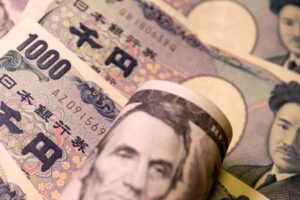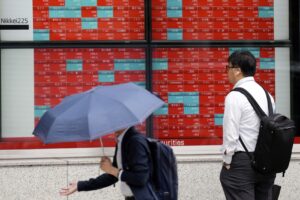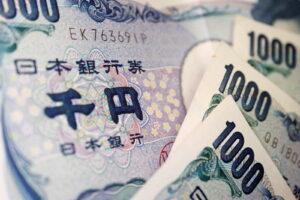Tokyo, 21 September, /AJMEDIA/
The Bank of Japan is widely expected to maintain ultralow rates at the end of its regular two-day meeting from Wednesday, bolstering the case that it will remain a laggard among major central banks in shifting to monetary tightening, even at the expense of a weaker yen.
After the yen slumped to a 24-year low against the U.S. dollar and Japanese authorities warned of direct currency intervention to avoid a further slide, financial markets were on alert for any hints of a change in the BOJ’s messaging on yen weakness and inflation, which has stayed above its 2 percent target.
On Thursday, the BOJ will likely set its short-term interest rates at minus 0.1 percent while guiding 10-year Japanese government bond yields around zero percent shortly after the U.S. Federal Reserve is expected to hike rates further to tame surging inflation.
The Bank of England will follow suit, while the Swiss National Bank may end its negative rate policy.
Market analysts expect yen weakness to continue, reflecting the BOJ’s dovish tilt. No tweaking of monetary policy would likely accelerate yen-selling even after more verbal intervention by Japanese authorities and inquiries by the BOJ to dealers about dollar-yen rates last week, seen as a precursor to actual intervention.
Asked about his views on market expectations for a policy tweak, Finance Minister Shunichi Suzuki said how to guide monetary policy is in the hands of the BOJ. “We expect the BOJ will make efforts to achieve its price stability target sustainably and stably in line with the joint statement (with the government),” he told a press conference Tuesday.
The BOJ’s view that the recent bout of inflation is mainly driven by higher energy and raw materials costs and should therefore be transitory has come under increased scrutiny.
The country’s core consumer inflation, which excludes volatile fresh food prices, jumped 2.8 percent in August, the fastest pace in nearly eight years. It was above the central bank’s 2 percent target for five months in a row.
Economists say the headline inflation figure will likely gain further and exceed 3 percent before year-end, due in part to the rapidly weakening yen, which inflates Japan’s import costs.
The yen fell close to 145 versus the dollar earlier this month. Breaking the 145 barrier will likely accelerate the yen’s fall toward 147.66, a level unseen since 1998, with 150 being the next resistance level, according to currency analysts.
Koji Fukaya, a fellow at consulting firm Market Risk Advisory Co., warns of the yen’s broad weakness after the Swiss National Bank goes ahead with a rate hike. The yen and the franc have been low-yielding currencies, seen as safer bets in times of market uncertainty.
“At focus is whether the BOJ will make any modifications to its policy that would put the brakes on the yen’s depreciation or pave the way for the currency to test 147,” Fukaya said. “The risk is that yen-selling will accelerate if no tweaks are made…and on the view that authorities cannot stop it.”
The last time Japan intervened in the currency market by buying the yen for the dollar was in 1998.
Governor Haruhiko Kuroda has underscored the negative side of the weaker yen, saying earlier this month that rapid fluctuations were “unfavorable.”
Kuroda has maintained that monetary easing is necessary for Japan because its economy is still in the midst of recovery from the fallout of the COVID-19 pandemic and faces downward pressure from higher commodity prices.
He has said aggressive rate hikes would be needed to stop the yen’s fall against the dollar, which could do considerable damage to the economy, sounding pessimistic about near-term tightening.
The world’s third-largest economy grew an annualized real 3.5 percent in the April-June quarter, but its growth is expected to slow in the current quarter.
The BOJ is widely expected to end its pandemic-relief program to support financially struggling small and midsize companies amid the pandemic at the end of September as scheduled.








































